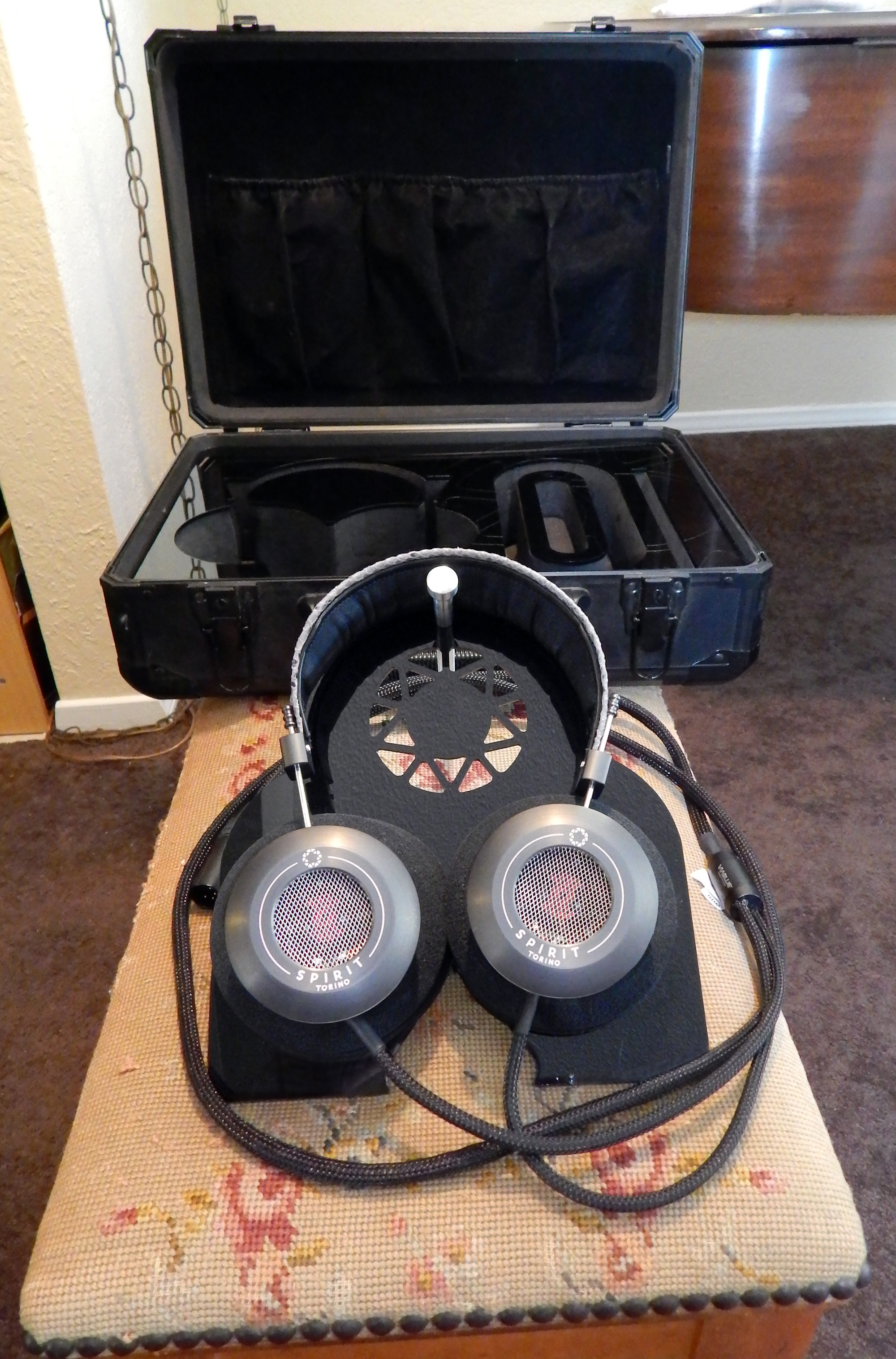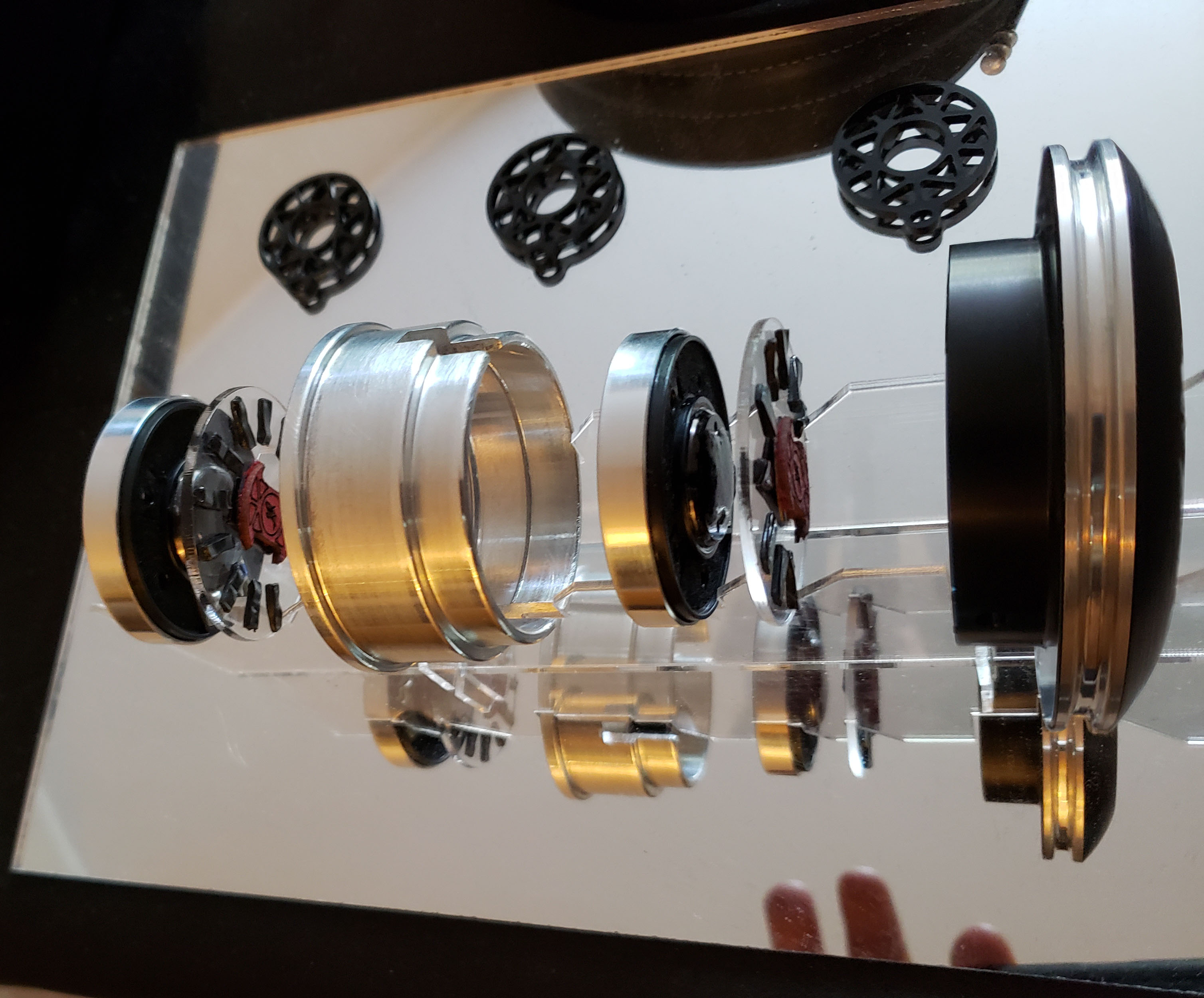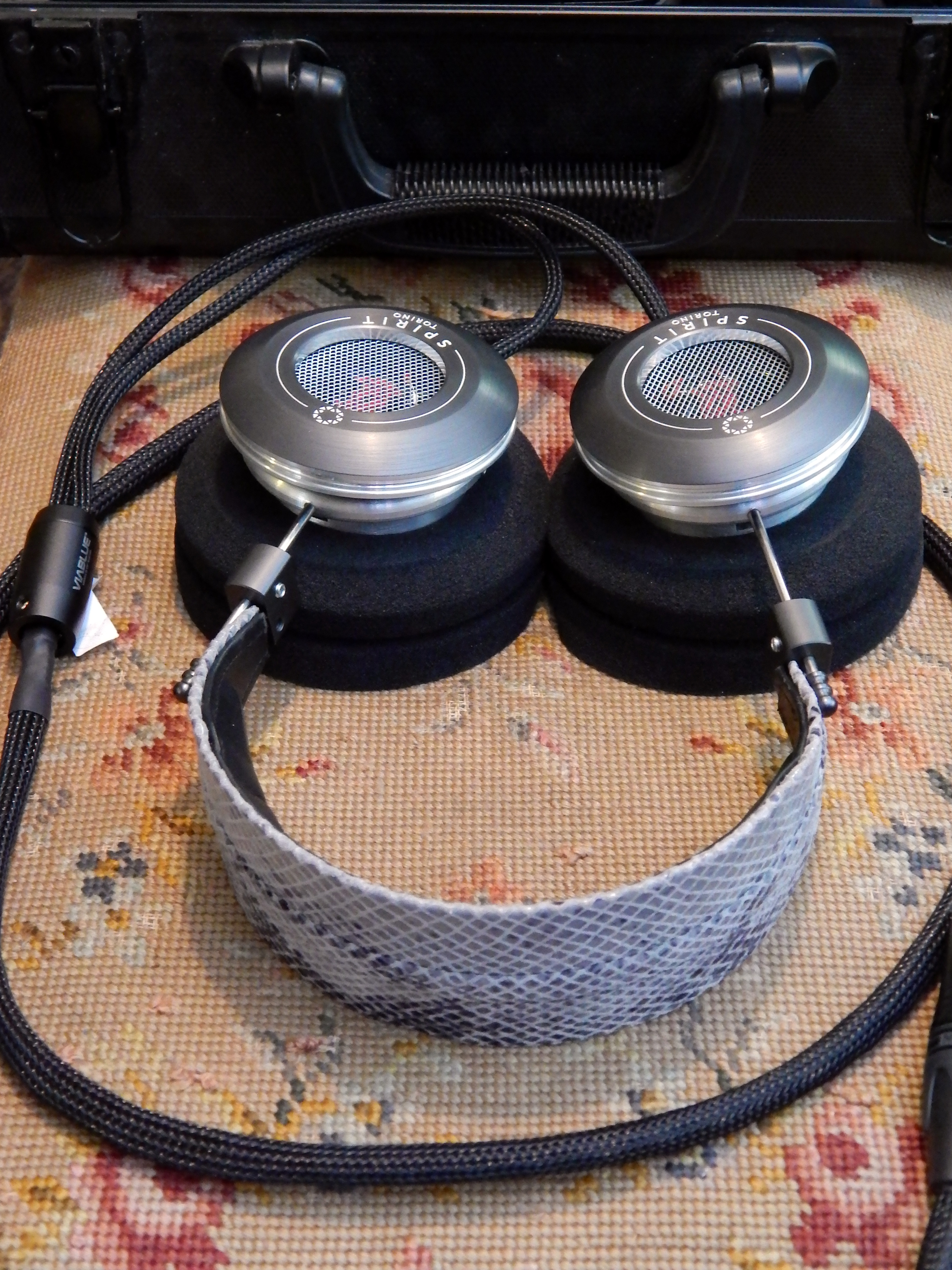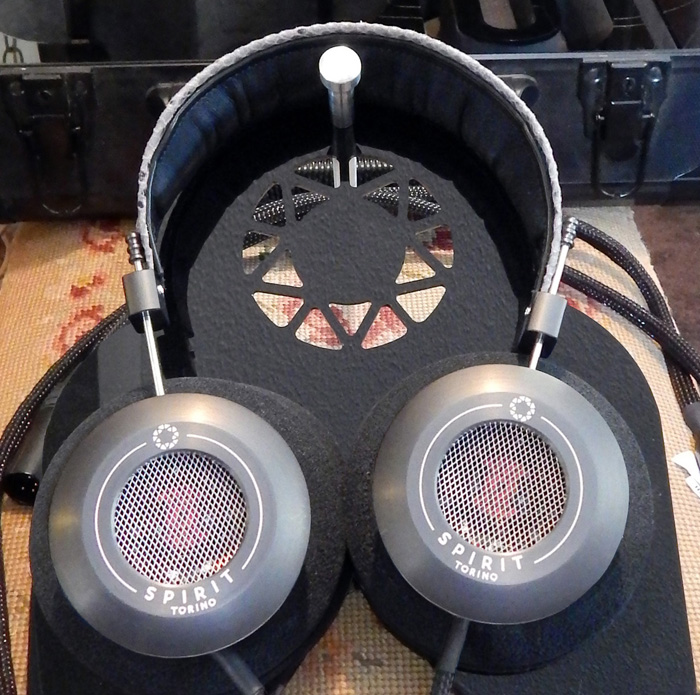Out of Italy comes another new headphone line bringing that high-end Italian look, feel, construction and performance, Spirit Torino. The Spirit Torino Twin Pulse model headphone evinces that edge of technology feel of other Italian legends such as Ferrari. Designed by Andrea Ricci whose experience as the sound engineer for the Teatro Regio, Turin’s Opera house, and audio technician of the Polincontri Classica association led him to start his own record label, Spirit Torino was the result of a passion for sound that pushed him (like many other new headphone manufacturers) to modify a slew of different headphones, until it became clear that he needed to build a headphone from scratch in order to reach his goal of “an extraordinarily natural and refined listening experience, with the closest dynamics to a live concert.”
A quick glance at a Spirit Torino headphone will tell you where their inspiration comes from, but appearance and earpad design is where the similarity ends, as Spirit Torino adopts proprietary driver designs and has their own unique sonic signature.

The Spirit Torino Twin Pulse:
Spirit Torino currently produces four headphones; the MMXVIII, the MMXVIII SL, the Twin Pulse, and the Ragnar Edition. Filling in as their flagship model the Spirit Torino Twin Pulse (the Ragnar Edition is a variant of the Twin Pulse) employs a Twin Pulse isobaric system power unit, the first open isobaric system applied to a headphone. The system consists of two high-performance drivers connected in series and moving in sync across the entire audio range. This innovative configuration allows the drivers to convey the aerodynamic flows of the vents faster, allowing impressive acceleration. The series connection of the two drivers allows the following strategic advantages: Halving of the linear movement of the mobile unit while keeping it within an optimal range to limit distortions and dynamic compression, doubling of the power handling ability, and doubling of impedance to 64 Ohms for efficient amplification.

Starting with the packaging, the Spirit Torino Twin Pulse headphones came in a sturdy metal briefcase, with a die-cut acrylic and foam insert to hold and store the headphones and a velvet pocket to store the stand and accessories. The included headphone stand is unique, and designed to display as well as support the headphone, though its footprint is a bit large.
As to the Twin Pulse headphones themselves, the exquisitely finished all metal construction speaks volumes as to the high quality of manufacturing. The headband is custom made by one of the top Italian designer houses and consists of leather with a choice currently (this may be expanded in the future) of six different surface materials; the ones tested had a beautiful snakeskin upper. It is not a light headphone, but this appears to be an intentional part of their Inertial Frame System which is meant as a damping system to limit the movement of the ear-cups as opposed to the drivers in relation to the ear improving dynamic range, speed, and efficiency. Another intentional feature that may not be popular is their Effective Current Transmission, which translates into the headphone cable being directly soldered to the drivers with a choice of 4 different connections, 4 pin XLR, 3.5mm TRS, 6.3mm TRS, 2.5mm TRRS, meaning that they cannot be easily swapped out for other cables, but as the headphone cable is treated as a component of the headphone (rather than a simple connection), and this is done purely for sonic reasons, it is understandable.

Unlike many headphones where the frame is meant to contribute to the sound produced by the drivers, Spirit Tornio believes that the housing should not color the sound due to resonance of the frame, in their words, “The frame is therefore made of “Dural” aluminum to which a layer of Dynamat Extreme™ is applied. Dynamat Extreme™ is, in turn, a composite material derived from car hi-fi applications that add the damping characteristics of a high-density adhesive putty to a sheet of rigid aluminum.” They further dampen internal sound reflection using bits of felt and even the earpad is constructed of two types of high-density ZF foam to ensure proper distance from the sound emission point to the ear canal while providing maximum comfort.
The drivers are produced by Nhoord Audio to Spirit Torino’s exacting specifications using petals of Dynamat Extreme on the exhaust vents and a special gel on the membrane to optimize high-frequency behavior.

The Sound:
For the bulk of my listening tests, I used my reference stack consisting of the Questyle Audio CAS192D Current Mode DAC and a pair of Questyle Audio CMA 800R Current Mode Headphone Amplifiers. Due to the Spirit Torino’s high efficiency, I followed up with a few songs using the balanced output of my Questyle Audio QP2R DAP.
The Spirit Torino Twin Pulse headphones have a unique sonic signature. Big is the word that comes to mind. There is a warmth in the midbass that creates a palpable presence to the music. Listening to Eji Oue and the Minnesota Orchestra’s performance of Stravinsky’s “The Firebird Suite” (Stravinsky – DSD) put you in a box seat in a very large resonant hall. The instruments were solidly placed and individual with a realistic timbre to them. The tympanis were sharp, with solid impact, and extremely dynamic, yet fast enough to bring out the subtle rolls between crescendos. Overall a very exciting presentation.
An unexpected fullness was brought to the stark percussion based pop of Stan Ridgway’s “Camouflage” (The Big Heat – 16/44.1 kHz), enveloping you completely in sound. The velvety warble of Stan’s voice clear and upfront, while the soundstage was once again huge.
Peter Gabriel’s vocals were immediate and the acoustic guitars were clear and present even when Michael Rutherford’s bass pedals and Tony Bank’s keyboards dominated the presentation of “Can-Utility and the Coastliners” (Genesis – Foxtrot – 16/44.1 kHz). The Mellotron passages were ethereal, and the bass guitar was crisp, while the bass pedals were rich and full bodied.
Taking advantage of the Twin Pulse’s fat sound I put on Hoagy Carmichael singing “Lazy River” (Hoagy Sings Carmichael – 16/44.1 kHz) and was transported to one of those great night club scenes from 1940’s movies. Neither harsh nor brassy, the horns provided a wall of sound, with Hoagy up close at the microphone and the upright bass and drums filling it out in a lively performance.
For a take on piano, I choose Billy Joel, and what better track than “Piano Man” (Piano Man – DSD) for said purpose. The Spirit Torinos lent a rich burr to the piano which was enhanced by the bass guitar, while the Twin Pulse’s expansive soundscape imparted a grandiose feel to Billy’s vocal. As with the previous tracks, the backing instruments floated in space immersing you in a pool of music.
Cueing up Miles Davis’ “Freddy Freeloader” (Kind of Blue – DSD) on the QP2R I was treated to some of the best saxophone sound I have heard and the musicality of Miles’ trumpet was superb. The double bass was strong but natural and the drums had real snap. The piano was a bit distant with a meaty Steinway intonation. Again the soundstage was large auditorium.
Following up with “Great Gig In The Sky” by Pink Floyd (Dark Side Of The Moon – DSD) simply reinforced everything I had already observed.

The Payoff:
The Spirit Torino Twin Pulse headphone is a reference level headphone with great musicality, a huge soundstage, excellent tonal balance, surprising speed and linearity, and an efficiency that translates into amazing dynamic range. They are also a fun headphone to listen to, not in an overly colored hip hop way, but more in a larger than life presence way. On top of that, they are beautifully constructed and comfortable enough that you don’t notice their weight. And let’s not forget that little bit of Italian cachet, which is embodied in the snakeskin headband and the metal briefcase with the acrylic insert.
This is a headphone that is definitely on the must-hear list, I would certainly rate it as the best dynamic headphone I have heard and if you’re in the market for a reference headphone you should absolutely check out the Spirit Torino Twin Pulse, I know I would be happy to make it my reference dynamic headphone.
http://www.spiritsoundesign.com/en#Twin-Pulse
Price: $3,200 USD
Technical data:
Weight: 460gr
Impedance: 64 Ohms
System: open circumaural headphone with Twin Pulse Isobaric System technology.
Max. power handling: 4000 mW
Frequency response: 15-22.000hz
Connections: 4 pin XLR, 3.5mm jack, 6.3mm jack, 2.5mm Trrs jack
Headband: natural premium leather with sliding adjustment.
Pad: circumaural ZF Foam with anatomical shape (machine washable 30 °)















Want to join discussion?
Feel free to contribute!